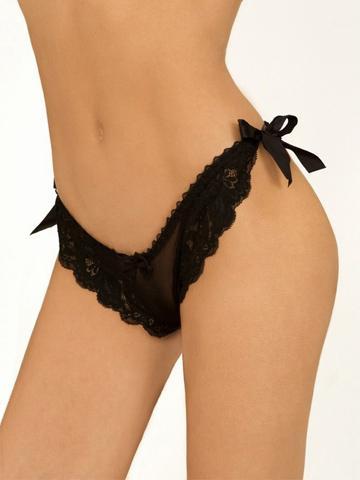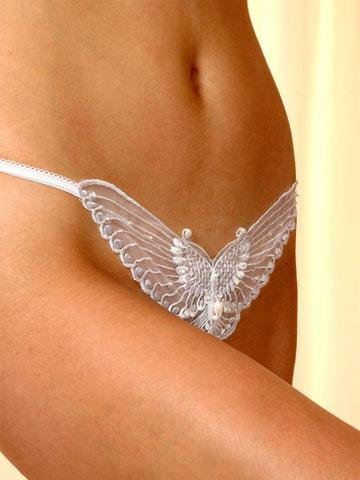Shopping for an engagement ring doesn't have to be a dreaded experience. With the right amount of knowledge about what to look for in a ring, coupled with your excitement about asking the girl of your dreams to marry you, this can be an enjoyable exercise matching your newly discovered ring expertise with the money you've got available to spend. In this article, you'll learn the most important things to consider when choosing an engagement ring for your beloved.

1. Be familiar with the terms that you'll be confronted with when shopping for a ring. Giving the impression that you know what you're looking for will increase your confidence and help you to ward off any disreputable ring sellers. Here are some of the terms to be familiar with:
- Band: The band is the circular part of the ring that sits around the finger. It's usually made from gold, silver, or platinum, although it can be made from some other combination of metals.
- Setting: The setting refers to the piece that holds the gemstone in place, which is attached to the band. The setting can be "pronged" or "invisible".
- Gemstone: The gemstone is the feature piece of the ring, usually a diamond. Occasionally, this is facetiously referred to as a "rock". The bigger the stone, the better according to many, although it's more important to go with your girlfriend's personality and preferences rather than assuming this. The gemstone doesn't have to be a diamond (see below) but reasons for deviating from this should be good ones!
- The 4 C's: These are the carat, color, clarity and cut of the gemstone (usually a diamond).
2. Choose a good jeweler. The main thing to remember here is that expensive doesn't necessarily equate with being the ideal jeweler. Look for a store that makes you feel comfortable, where the staff are pleasant and helpful, and where the advice they provide gels with you. As well, be sure to look somewhere that fits within your budget range; this avoids the inevitable disappointment at finding something that would be "just perfect if it didn't cost so much". If you can, check that the jeweler is registered with a society, association, or organization that regulates, certifies, etc., jewelers, such as the National Association of Goldsmiths in the UK
- Ask around your married friends or your family for recommendations on a good, trusted jeweler. Obviously, this will mean they'll know what you're up to, although you can just say that you want to buy a nice piece of jewelery.
- If you're happier proposing first and shopping for a ring with your fianc�e, take her preferences for the store into account as well. This is easier where you'd prefer that her choice and tastes are fully accounted for; it's just as romantic, but it means you'll need to provide a mock-ring for the engagement, and explain to her that you'd rather the two of you choose the ring together.Go shopping together
- Another thing to discuss with the jeweler is the ability to custom design the wedding ring to match the engagement ring. You might like to think ahead to this eventuality because it can be a stunning combination to have both rings matching well together.
3. Find out her tastes. If you're purchasing the ring without her, choosing one will be will more difficult where the ring is a surprise because obviously you won't be able to ask her. Do keep in mind that nowadays, many women prefer to be part of a joint decision to purchase a ring, so if you find it really difficult to know her style and taste, provide a temporary ring and tell her that you'll choose the real one together. Some of the ways to try and work out her taste include:
- Asking her about rings in general. If you're going past a jewelery store pretend to be interested in a watch. Then casually drop a comment about the styles of rings, saying you like a certain type and asking her what she likes. If you're very good, she won't notice the ruse. If you're not so good, she'll probably tweak but she still won't know when! Other ways of getting her to talk about engagement rings is to make a comment about a friend's engagement ring and to ask her preferences at the same time.
- Ask her family for ideas. This will depend on whether or not you want them to know before she does, of course.
- Another ruse is to have her friends take her into a store to ask her "just for fun". You'll need to have absolute trust in them to keep quiet and to pull this off. It's not a good option if you'd prefer to keep it quiet until the moment of the proposal.
- Sum up her tastes from the clothes she wears and her existing jewelery. Your in the best position to know whether she likes plain, fancy, patterns, large or small fashion statements. Is she traditional, classic, contemporary, or way out there? Use what you do know about her fashion preferences to your own advantage.
- Is she an impassioned supporter of Fair Trade and human rights? Be sure to look for recycled gold and conflict-free diamonds as part of your choosing process.
4. Fix your budget. There is a tradition that holds that a man should spend two months of his salary on the engagement ring. Whether or not you do this will depend on your wish to conform to tradition. What does matter is that you select a ring according to what you can afford, so have a good idea of this amount before searching.
- Let your jeweler know your price range so that he or she can show you a variety of rings that fall within that range.
- Keep in mind the possibility of having an engagement ring customized. Talk to the jeweler about the price options, the timing, and the styles that are possible.
5. Know your diamonds. Diamonds tend to be the traditional engagement ring choice, because they are enduring, and match everything. Only deviate from a diamond if you know that your girlfriend loves another stone much, much more, or has voiced her intense dislike of diamonds. When choosing a diamond, be aware of the "Four C's", as follows:
- Carat: This refers to the unit measurement of the diamond, and refers to weight (not size). Every carat has 100 points. Engagement rings are usually 1 carat but the ring you choose will obviously depend on your budget. A 1 carat ring on a limited budget may not rate very highly in other areas, taking away from its overall beauty.
- Color: The color of diamonds varies considerably and most people prefer a very white colored diamond for an engagement ring. Colors are graded from D (colorless and rare) and most good quality diamonds will be around F and H and grades D to I are acceptable to buy as they are almost identical when mounted.
- Clarity: Being natural, there will be imperfections in the diamond. The less imperfections, the greater the clarity and the more light is reflected from the diamond, causing it to "sparkle". Naturally, more clarity increases its value. Perfectly flawless diamonds with no internal flaws or surface blemishes are very hard to find as they are extremely rare. Fewer flaws in a diamond result in greater brilliance as more light is reflected.
- The scale used to grade clarity goes from F1 for a flawless diamond, to VVS1 and VVS2 for very slight inclusions, to VS1 and VS2 for very slight inclusions, SI1 and SI2 for slight inclusions and I1, I2 and I3 for imperfect diamonds.
- Diamonds are magnified by 10 times to judge their clarity so very slight imperfections are difficult to see with the naked eye. This means that there is a range of diamonds available even for more modest budgets. If you can see a mark without magnification, however, think carefully before you buy.
- Cut: There are different ways to cut a diamond, and the type of cut impacts the sparkle of the diamond. The cut that produces the most sparkle is the round (or brilliant) cut, while radiant and princess cuts are good at hiding flaws. Other cuts including square, emerald, pear, marquise, cushion, Asscher, and heart-shaped.The oval shape looks best with larger stones, and looks bigger than the round cut
Share |












No comments:
Post a Comment